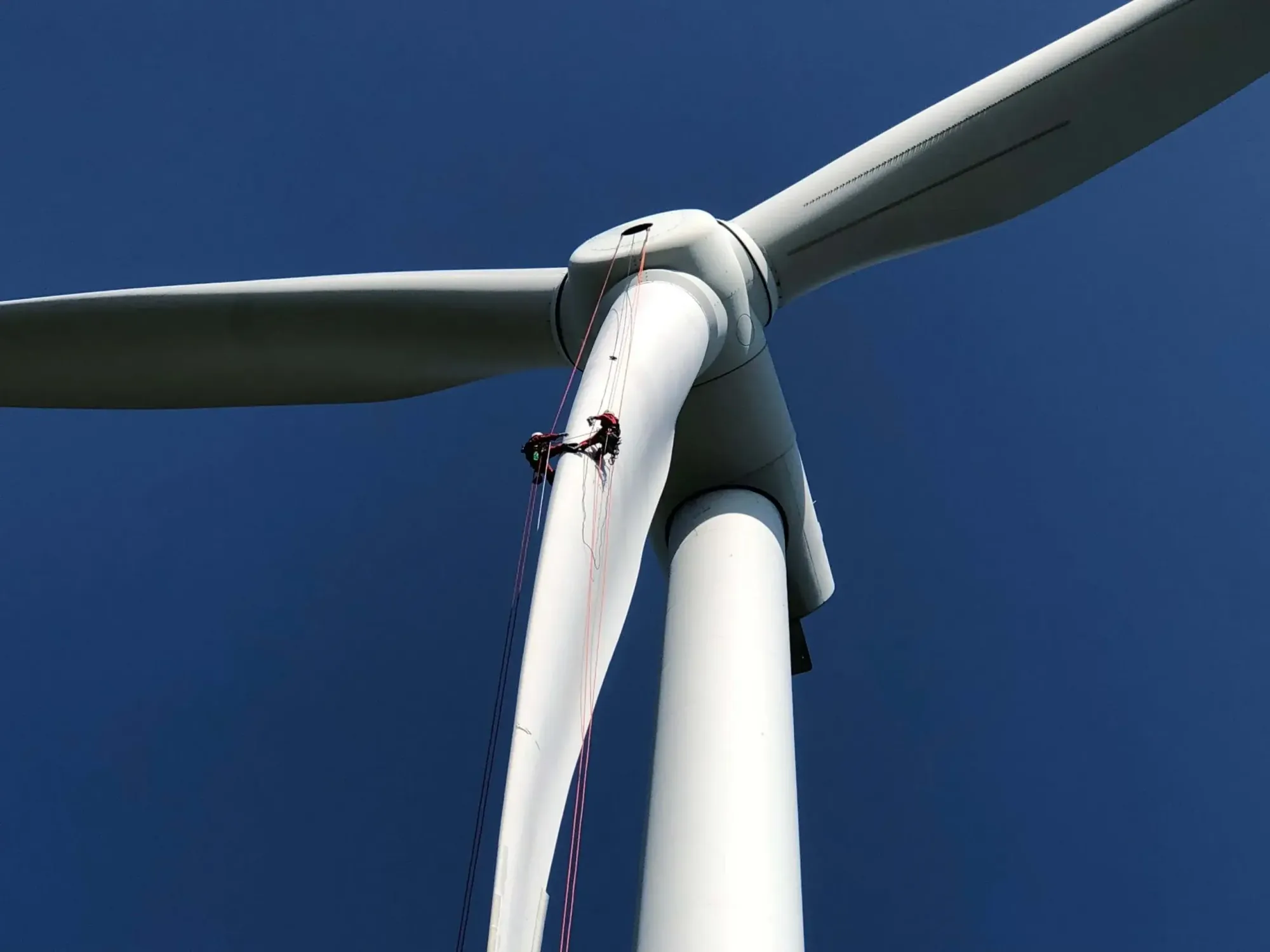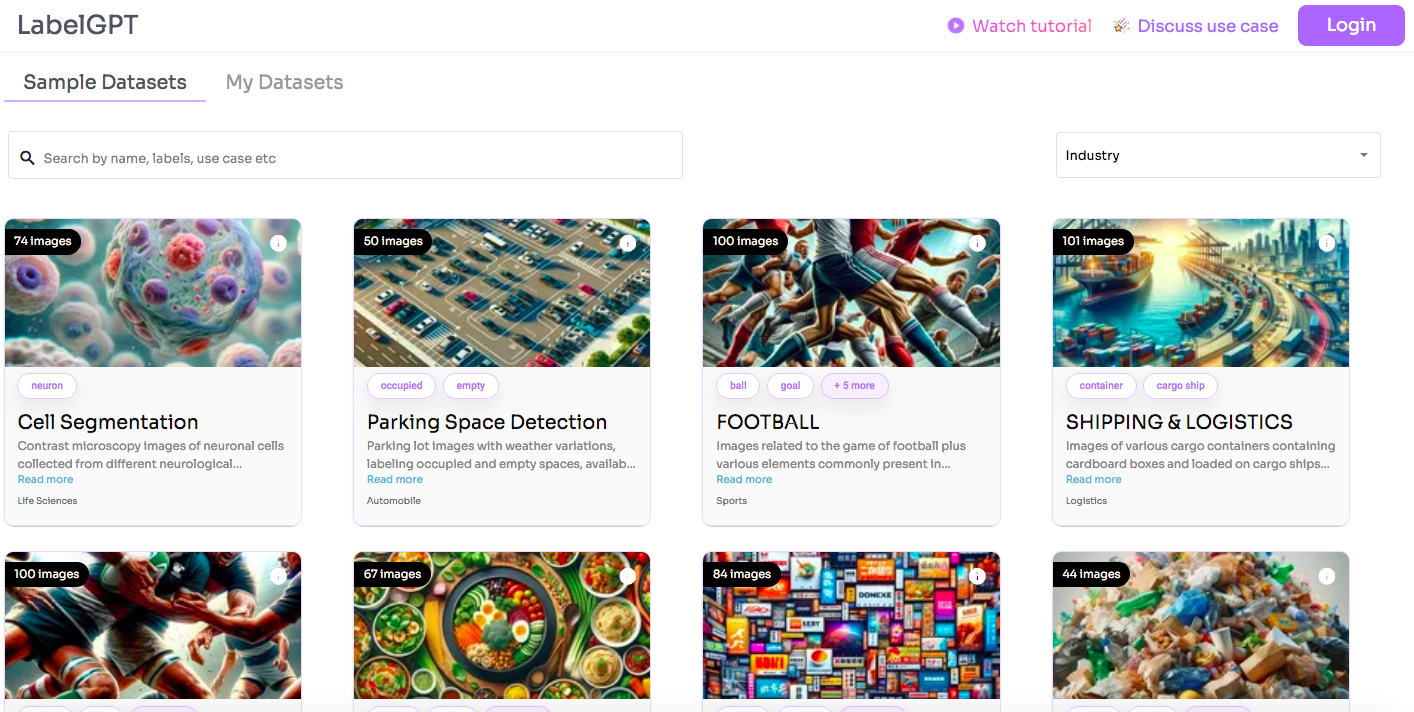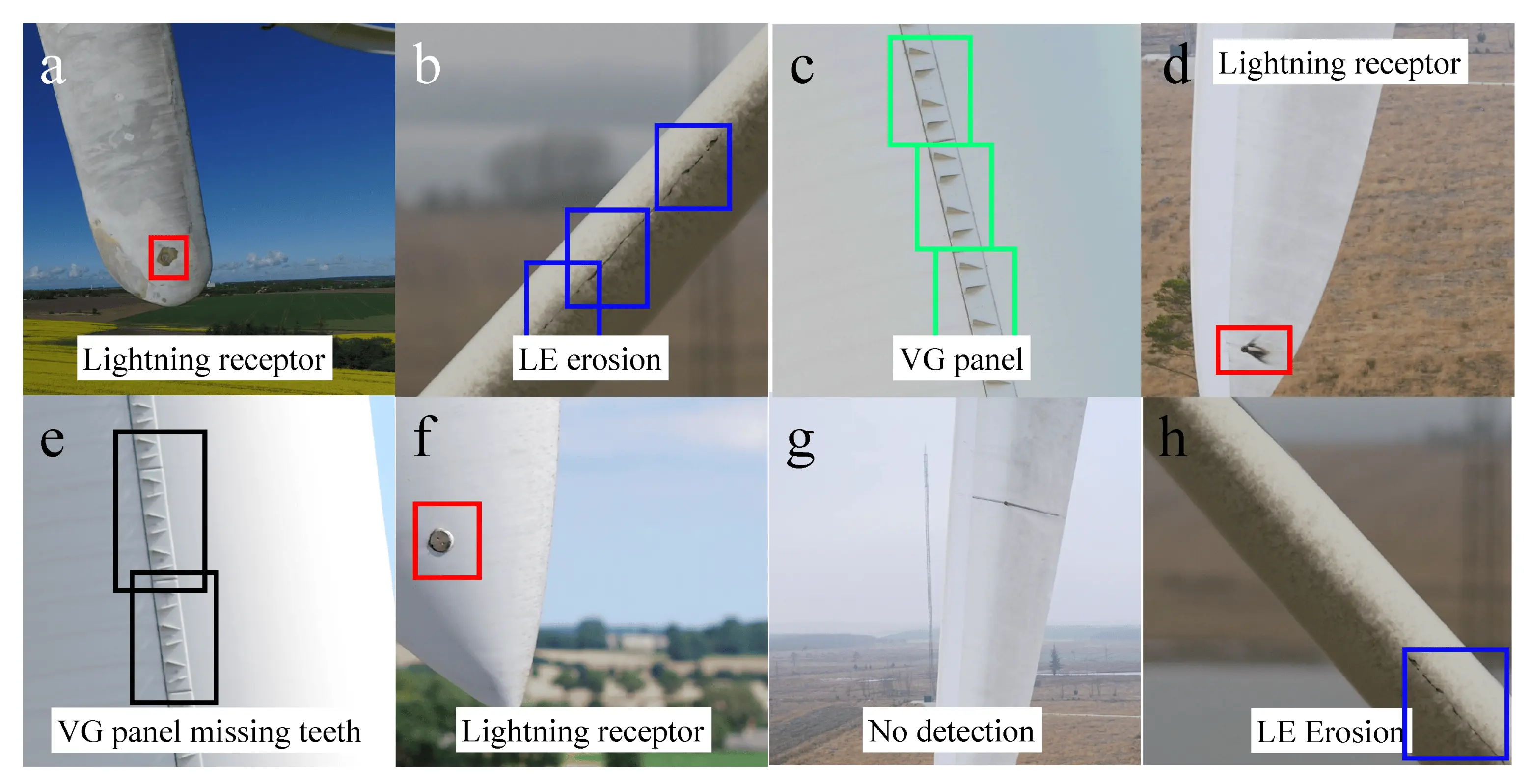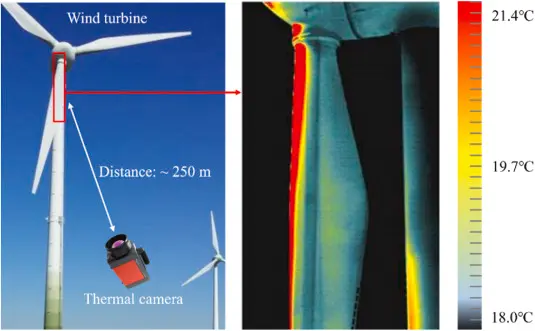Wind Turbine Surface Damage Detection Using Computer Vision

Table of Contents
- Introduction
- What Roles Does Computer Vision Play in Wind Turbine Inspection?
- Application
- Advantages of Using Computer Vision
- Conclusion
- Frequently Asked Questions
Introduction
In recent years, renewable energy sources like wind power have gained significant traction in the global energy landscape. Wind turbines play a crucial role in harnessing wind energy and converting it into electricity.
However, like any machinery, wind turbines are susceptible to wear and tear, which can affect their efficiency and longevity. Detecting surface damage on wind turbine blades is vital for ensuring optimal performance and preventing costly downtime.
Traditional inspection methods often involve sending personnel up the tower, which can be dangerous, time-consuming, and expensive.
This is where computer vision steps in, offering a revolutionary approach to wind turbine surface damage detection.

LabelGPT: Auto Detect Object In Wind Turbine Dataset
What roles does Computer Vision play in Wind Turbine Inspection?

Computer vision involves using algorithms and machine learning to "see" and understand images and videos. In the context of wind turbine inspection, it requires capturing images of the turbine blades using drones or ground-based cameras. These images are then analyzed by computer vision algorithms trained to identify various types of surface damage, such as:
-Leading edge erosion
-Cracks
-Lightning strikes
-Delamination
-Surface staining
Here's how computer vision detects wind turbine surface damage
Image Acquisition
Initially, high-resolution images or videos of wind turbine blades are acquired using cameras mounted on drones, ground-based vehicles, or fixed inspection platforms. These images capture detailed visual data of the turbine blades from different perspectives and distances.
Preprocessing
The acquired images undergo preprocessing to enhance their quality and suitability for analysis.
This preprocessing may involve tasks such as noise reduction, contrast adjustment, and image stabilization, ensuring optimal conditions for subsequent processing.
Bounding Box Annotation
An important step in the process is the annotation of bounding boxes around regions of interest on the turbine blades. These bounding boxes locate areas where potential surface damage may occur, such as the leading edge or specific sections of the blade.
Annotation can be done manually or through automated algorithms trained to identify relevant features.
Feature Extraction
Computer vision algorithms extract pertinent features from the annotated regions, focusing on characteristics indicative of surface damage, such as cracks, erosion patterns, or deviations from the blade's ideal shape. Techniques like edge detection and texture analysis help identify these features.
Damage Detection
Utilizing machine learning models trained on annotated datasets, the extracted features are analyzed to detect signs of surface damage. Convolutional Neural Networks (CNNs) are commonly used for this task, as they excel at learning hierarchical representations of visual data and detecting subtle patterns associated with damage.
Classification and Localization
Upon detecting damage, the computer vision system classifies the type and severity of the damage and localizes its position on the turbine blade. This involves determining the exact coordinates of the bounding boxes containing the detected damage and assessing its extent. Techniques like object detection and semantic segmentation aid in this process.
Integration and Reporting
The results of the computer vision analysis, including classified damage types and their locations, are integrated into the wind farm's maintenance management system.
Reports are generated, providing detailed insights into the condition of turbine blades and guiding maintenance decisions. Visualization tools may be used to display annotated images with identified damage regions for further analysis.

Application
Routine Maintenance Inspections
Computer vision technology enables wind farm operators to conduct routine inspections of turbine blades with greater efficiency and accuracy.
By automating the detection of surface damage, such as cracks, erosion, or leading-edge defects, maintenance teams can prioritize and plan repairs effectively, minimizing downtime and optimizing turbine performance.
Remote Monitoring and Diagnostics
With the integration of computer vision systems, wind farms can implement remote monitoring solutions for continuous surveillance of turbine blades.
Cameras installed on drones or fixed monitoring stations capture real-time images or videos, which are then analyzed using computer vision algorithms to detect any signs of damage.
Preventive Maintenance Planning
Computer vision-based damage detection facilitates the implementation of preventive maintenance strategies.
By identifying and quantifying surface damage on turbine blades over time, operators gain insights into the degradation patterns and can schedule maintenance activities accordingly.
This proactive approach helps extend the lifespan of turbine components and reduces the likelihood of unexpected failures.
Performance Optimization
Surface damage on turbine blades can significantly impact aerodynamic performance and energy production. Computer vision technology aids in assessing the extent of damage and its impact on turbine efficiency.
By correlating damage severity with performance data, operators can optimize operational parameters, such as blade pitch angles or yaw adjustments, to mitigate losses and maximize energy output.
Risk Mitigation and Safety
Manual inspections of wind turbine blades involve inherent risks to personnel, particularly when working at height or in adverse weather conditions.
Computer vision-based inspection systems minimize these risks by eliminating the need for human intervention.
Drones equipped with cameras can safely navigate around turbines, capturing detailed images without endangering personnel, thus enhancing overall safety in wind farm operations.
Advantages of using Computer Vision
Accur
Computer vision algorithms can analyze images with high precision, detecting even subtle signs of surface damage that may be missed by the human eye during manual inspections.
Efficiency
Automated inspection using computer vision reduces the time and labor required for blade inspections, enabling faster and more frequent assessments of turbine condition.
Scalability
Computer vision-based inspection systems can be easily scaled to accommodate large wind farms with numerous turbines. This scalability ensures comprehensive coverage and timely detection of damage across the entire fleet of turbines.
Safety
By utilizing drones or other remote inspection methods equipped with cameras, computer vision eliminates the need for personnel to physically climb turbines for inspection purposes, thereby reducing the risk of accidents and injuries.
Conclusion
The application of computer vision for surface damage detection on wind turbine blades represents a significant advancement in the field of renewable energy maintenance and management.
By using the power of artificial intelligence and image processing, wind farm operators can enhance the efficiency, safety, and reliability of their turbine assets, ultimately contributing to the continued growth and sustainability of the wind energy sector.
Frequently Asked Questions
Q1) What is wind turbine surface damage detection using computer vision?
Wind turbine surface damage detection using computer vision involves the use of artificial intelligence and image processing techniques to automatically identify and assess damage on the surface of wind turbine blades. It aims to detect cracks, erosion, and other forms of damage that may compromise the efficiency and integrity of the turbine.
Q2) How does computer vision detect surface damage on wind turbine blades?
Computer vision algorithms analyze high-resolution images or videos of wind turbine blades, extracting features indicative of damage such as cracks, erosion patterns, and deviations from the blade's ideal shape. Machine learning models, including Convolutional Neural Networks (CNNs), are trained to recognize these features and classify the type and severity of damage.
Q3) What types of damage can computer vision detect on wind turbine blades?
Computer vision can detect various types of damage, including cracks, erosion, delamination, lightning strikes, and leading-edge erosion. It can also identify deviations from the blade's ideal shape and symmetry that may indicate structural issues.

Simplify Your Data Annotation Workflow With Proven Strategies
.png)


